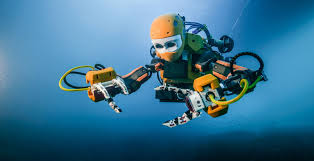
Breaking News
 Battleborn Batteries Responds! Their Overheating Device is a "Feature" not a "Problem
Battleborn Batteries Responds! Their Overheating Device is a "Feature" not a "Problem
 Actor Liam Neeson Outs Himself as MAHA After Narrating Pro-RFK Jr. Documentary Slamming...
Actor Liam Neeson Outs Himself as MAHA After Narrating Pro-RFK Jr. Documentary Slamming...
 Kyle Rittenhouse announced on social media Wednesday that he has tied the knot.
Kyle Rittenhouse announced on social media Wednesday that he has tied the knot.
 JUST IN: President Trump Grants Tina Peters Pardon
JUST IN: President Trump Grants Tina Peters Pardon
Top Tech News
 Build a Greenhouse HEATER that Lasts 10-15 DAYS!
Build a Greenhouse HEATER that Lasts 10-15 DAYS!
 Look at the genius idea he came up with using this tank that nobody wanted
Look at the genius idea he came up with using this tank that nobody wanted
 Latest Comet 3I Atlas Anomolies Like the Impossible 600,000 Mile Long Sunward Tail
Latest Comet 3I Atlas Anomolies Like the Impossible 600,000 Mile Long Sunward Tail
 Tesla Just Opened Its Biggest Supercharger Station Ever--And It's Powered By Solar And Batteries
Tesla Just Opened Its Biggest Supercharger Station Ever--And It's Powered By Solar And Batteries
 Your body already knows how to regrow limbs. We just haven't figured out how to turn it on yet.
Your body already knows how to regrow limbs. We just haven't figured out how to turn it on yet.
 We've wiretapped the gut-brain hotline to decode signals driving disease
We've wiretapped the gut-brain hotline to decode signals driving disease
 3D-printable concrete alternative hardens in three days, not four weeks
3D-printable concrete alternative hardens in three days, not four weeks
 Could satellite-beaming planes and airships make SpaceX's Starlink obsolete?
Could satellite-beaming planes and airships make SpaceX's Starlink obsolete?
Humanoid Robot Can Dive Deep Underwater, Exploring Reefs And Shipwrecks

Meet OceanOne, a robot avatar that lets humans explore deep under the Ocean's surface, without any of the dangers or time limits associated with diving.
While a human diver is constrained by pesky things like air and pressure when doing underwater research or excavations, a robot can stay underwater for much longer, collecting samples in hostile underwater environments.
OceanOne was tested at the archeological site of the shipwreck La Lune off the coast of France. La Lune, a flagship that sank in the Mediterranean in 1664. It lies under 300 feet of water, far beyond the reach of recreational SCUBA divers, who limit themselves to 130 feet.
Unlike submarines, which have limited ability to take delicate samples, and have tools that require extensive training to use, OceanOne is controlled by haptic joysticks, letting its operators feel the lightness or heaviness of whatever object it's holding, thus giving researchers a much more hands-on feel.
"You can feel exactly what the robot is doing," Oussama Khatib, leader of the OceanOne project, said. "It's almost like you are there; with the sense of touch you create a new dimension of perception."
While its first test was on a shipwreck, the initial inspiration for OceanOne was to create something that would allow researchers explore the extraordinarily deep (and relatively unstudied) coral reefs of the Red Sea.
Other researchers are working on similar technology, like robot hands that can be attached to submersibles. And robots already have a place in underwater exploration, discovering monsters and shipwrecks. There are a few smaller ocean-going drones also in the works but none that have the light tough of OceanOne.
Explore more pictures of OceanOne below.
1 of 6
Frederic Osada and Teddy Seguin/DRASSM
OceanOne
Students do a final check of OceanOne before it heads down to the wreck.

 First totally synthetic human brain model has been realized
First totally synthetic human brain model has been realized Mach-23 potato gun to shoot satellites into space
Mach-23 potato gun to shoot satellites into space


